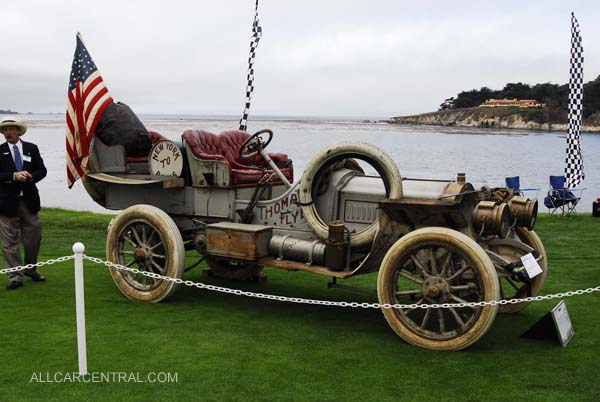Women in Racing
By
Geoff Wheatley, 2012 ©

Women in Racing
We have an American Woman's Soccer team that are world champions. We have several women tennis players who are world champions. Many of the international golf stars are women, The European Yachting Regatta was won twice by a woman's team, in short women have proved that they are as good as any male and in some cases even better. However in the world of Motor Racing we see very few female drivers and even less champions. Given the fact that they should be able to compete on equal terms I find this a little strange.
Historically it was a different situation, women did race and win many international road events especially in the 1920's and 30's. As far as I can tell the first recorded woman racing driver was a French lady, Madam Labrousse who was placed fifth in her class when she competed in the 1899 PARIS TO SPA Road Race. Remember these road tests were at best crude and open events with spectators often crowding into the road to get a better view of the cars and their drivers. The idea of any crowd control was simply a none starter, they raced on open roads mostly dirt rather than tarmac with no side pavements for spectators to stand so, if you wanted to see the race the best position was as close to the cars as you could get. The result was many accidents with the spectators getting the worse of the activity. By 1903 speeds had reached 70 or more miles an hour although the ability to stop at those speeds was limited!
1907 Thomas Flyer Model 35 New York-to-Paris Racecar

That year a road race from Paris to Madrid was the feature of the European Motor Racing year with over 200 competitors. Included in this group was another lady driver, Camille du Gast . She was no stranger to motor racing having competed in 1901 in the Paris to Berlin auto race. She was not placed but competed the course of over 680 miles. Because of the dreadful conditions of the roads or rather dirt tracks the tires usually gave out after a few grueling miles and a good supply of replacements were always on sale throughout the race route.
Here the women were subjected to a real disadvantage as the strength to raise a car, take off a wheel and replace a new tire was considerable, A mechanic usually completed the two person team even if he had no idea where or what the engine might be. His task to change tires as soon as possible, and was hired on his ability to change tires at record speed. This created a rather interesting new profession that required the individual to be large, strong and able, and who, because of the race requirements, (No passengers in the race vehicles) became a mechanic, if in name only!
There are many reasons why these events became both dangerous and exciting. The first of course was SPEED. Trains may have been capable of 70 miles an hour but you would never have the chance of seeing five trains on the open road trying to pass each other. Trains usually stayed on their rails but the same could not be said for race cars! Smoke and Dust often reduced vision to a minimum, sharp curves and century old bridges built for a one horse cart were further obstacles and as already mentioned people, who would rush into the center of the road to see the cars coming. Often these roads were lined with trees especially in the French countryside which also restricted vision and certainly ensured that any car that strayed off the dust track ended up decorating some tree trunk.
|
Returning to competitive women drivers both in Europe and America, we saw a few hit the headlines for a brief moment but very few became house hold names, make that very very few! Certain international race tracks did not allow women to compete not even against each other. The famous Brooklands Automobile Racing Club, was one such establishment, but when the first world war started women came into their own in many ways including driving large motor of vehicles, like heavy trucks, this totally changed the attitude of the motor world and we see more women behind the wheel of not only race cars but competition events throughout the world.
My Mother competed in several Amateur events in the 1930's hence my interest in the history of women competitive drivers. Her interest and the other girls who competed in Road Trials stemmed from the fact that once you had a car, and it did not have to be anything special, your could enter and show your talents in company with other females. I recall that she told me that she could register her car, fill it with gas, and compete over a fifty mile course, with a stop for lunch (included) for about ten US Dollars. If there were awards to be presented the cost could increase by another two bucks. This was in England where there were several professional female drivers showing their talents also in France and Germany. In 1935 two British women drivers entered the Monte Carlo Rally driving an open sports car. Fifteen years later another two English lady drivers followed in their footsteps and completed the 1950 Monte Rally. I never fond out what my Father thought of my Mothers weekend activates but I do know that he was more interested in fishing than dashing around the countryside in a beat up car with limited breaks and six volt lighting! Of course I only have a vague memory of all this but do recall that I spent more time with a fishing rod in my hands than the steering wheel!
Returning to prewar motor sports a 1924 Road Rally in Brazil covering a distance of over 1000 miles on roads of dirt, stones, mud and a host of other delights, especially in the rural areas, was won by two Male drivers from Argentina In second place two more from Brazil, and in sixth place two lady drivers from Chile who were only twelve minutes behind the leaders. Also in the first twenty to finish the course were two Eurapean lady drivers, French and German, who came in twelfth. By the 1930,s we had a Ladies Room at Brooklands and several women's events throughout the year. In America the story was much the same right through to the out break of the Second World War. Women competed at such locations as Indianapolis and New Jersey with success.
In the field of completive flying woman certainly held their own against the male pilots. Single record flights to India, and the far east, then Australia and finally around the world, All this with aircraft that many of us would never dream of getting into let alone fly. Instruments were at best primitive and radios totally unreliable. Two women out of many stand out during that period. Emilia Earhart and Amy Johnson. Emilia, (American), was lost trying to fly around the world and Amy,(British) was killed during the war ferrying aircraft from the war time factories to RAF fighter stations. In 1930 Johnson became the first woman to fly solo to Australia. Pat Moss the sister of Sterling Moss, carved a name for herself in the world Competitive Rally events winning several in the post war years. In short women have come a long way since 1899 despite the fact that we seem to have a shortage at the moment. However I am sure that there are or will be, others waiting in the wings to continue this success story.
© 2012 Geoff Wheatley Contributing Editor
BACK TO TOP
|
|

